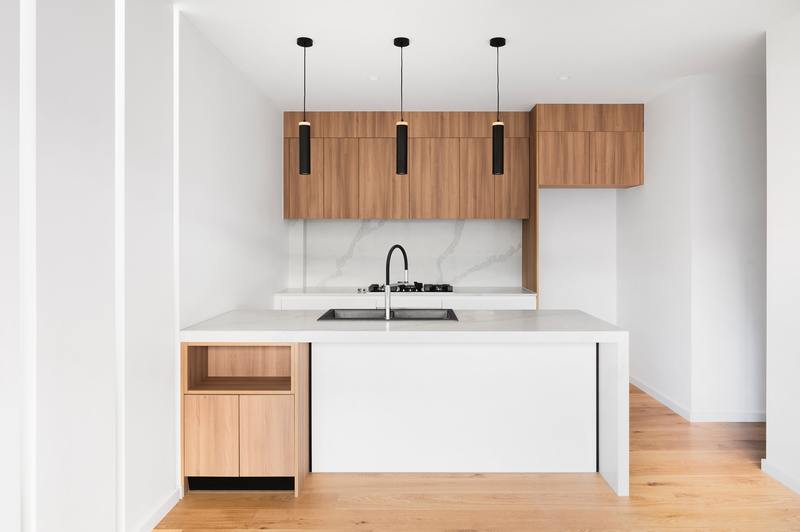Commonly, kitchen cabinets store unnecessary things, which allows mold to grow. Figuring out what causes mold in kitchen cabinets will make you a more observant homeowner.
Most homeowners would agree that the kitchen room is the heart of every home. It is the area where families usually bond and talk about life matters.

Despite having a pleasant kitchen display, you might have forgotten that there are corners in your kitchen which you barely check. Furthermore, your kitchen is not only the center for family talks, but the core source of family health as well.
In modern architecture, the kitchen room continually evolves while adapting to the needs of homeowners. Most kitchen innovations are concentrated on the room’s interior design, floor plan, and functionality.
Having an aesthetic and well-designed kitchen area is something worthy for homeowners to invest in. This is why it’s important to maintain this area and prevent mold.
Factors For Mold Growth In Kitchen Cabinets
Mold is an unpleasant display and can thrive in different areas of your home. In the case of mold in kitchen cabinets, mold doesn’t need sunlight to reproduce.
Unfavorably, mold can wreak havoc in your kitchen cabinets, causing damage to it if unnoticed. These are various factors on why mold grows in kitchen cabinets.
1. Humidity from cooking
Your kitchen is prone to moisture due to excessive humidity from cooking. Excessive moisture has a potential to build up in surface areas in your kitchen, including kitchen cabinets.
Basically, kitchen cabinets are made of wood, which is susceptible to mold. Managing humidity is vital in maintaining your kitchen area uncontaminated.
It is critical to consider setting up a dehumidifier to reduce moisture build up in your kitchen pantry and cabinets. It does not only reduce the possibility of mold growth in your kitchen cabinets, it also eliminates musty odor in your kitchen space.
2. Ventilation
Due to the humidity from cooking, your kitchen space may overheat, which is unpleasant for homeowners and an opportunity for mold to grow.
As you know, mold will likely reproduce in the presence of moisture and warm temperature. Therefore, it is important for homeowners to have good ventilation in the kitchen.
Kitchen cabinets could be affected without proper ventilation as these cabinets are made of wood and metal furnishing. With these types of material, mold can grow on its surface and at the same time destroy its appearance.
3. Leaky pipes
One of the common problems of homeowners is leaky pipes. The common causes of leaky pipes could be broken seals, clogged lines, corrosion, incorrect pipe laying, damaged pipe joints, and other unexpected circumstances.
As a homeowner, it’s important to become watchful with this kind of problem as it could lead to greater damage.
Unknowingly, leaky pipes could destroy your property, like kitchen cabinets. In some kitchen layouts, wood cabinets are installed underneath the kitchen sink, otherwise called sink base cabinets.
This kind of kitchen cabinet saves kitchen space, however, it is more prone to mold infestation.
4. Spoiled goods in kitchen cabinets
Kitchen cabinets are designed to store different cooking materials and equipment, dry goods, and other food items.
Ideally, they are preferred to have frames to protect from contaminants. Additionally, kitchen cabinets nowadays are designed aesthetically while serving its purpose.
While you store food and other goods, it is critical for you to distinguish perishable goods from non-perishable ones. Highly perishable food is not recommended to be stored in kitchen cabinets as it has a short shelf life.
Meanwhile, if you ever forgot to dispose of spoiled goods, mold growth would likely occur and spread. Essentially, proper food storage will reduce the possibility of food spoilage and will keep its quality for an extended period of time, which will then prevent mold growth in kitchen cabinets.
What to do with mold in kitchen cabinets?
In order to keep mold from appearing again in your kitchen cabinets, it is critically important to find the cause of its appearance.
As mentioned above, mold grows in the presence of humidity, moisture, and warm temperature. Therefore, you must do all the necessary means to keep mold from growing.
Fortunately, mold problems in your kitchen cabinets could be solved with ease. Various cleaning methods of eradicating mold are now available online and are easy to access.
For instance, if your kitchen cabinets are made from plywood material, you could easily search for removing mold from plywood.
More to that point, various products that aim to eliminate mold are now available in the marketplace. All you have to do is add to cart mold control products like concrobium mold control and let the product do its purpose.
Conclusion
Learning what causes mold in kitchen cabinets is beneficial for homeowners. Mold is a nasty display in your kitchen space and could impose health risks.
As a homeowner, investing in your kitchen is a smart thing to do. If you ever suspect your kitchen hosting mold, locating the source of the problem and subsequently fixing it will help lessen your worries.
Furthermore, keeping your kitchen cabinets clean and dry is the best thing to do.
